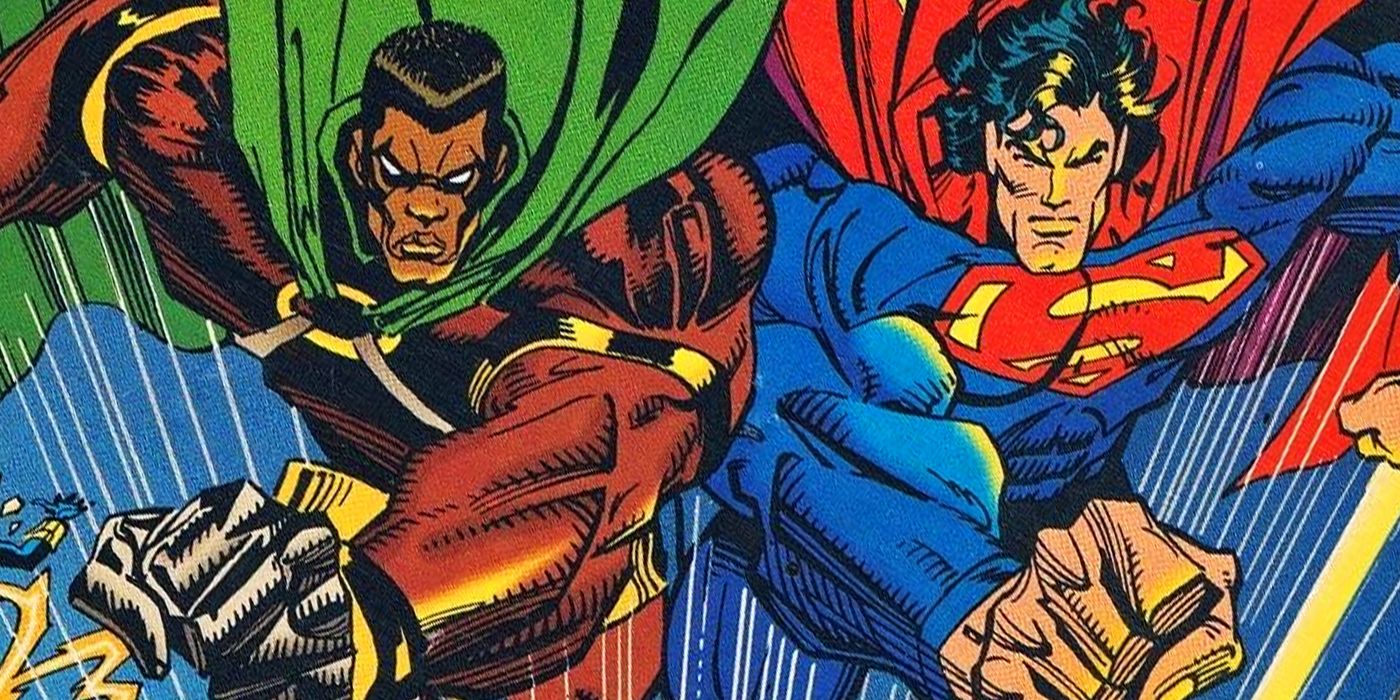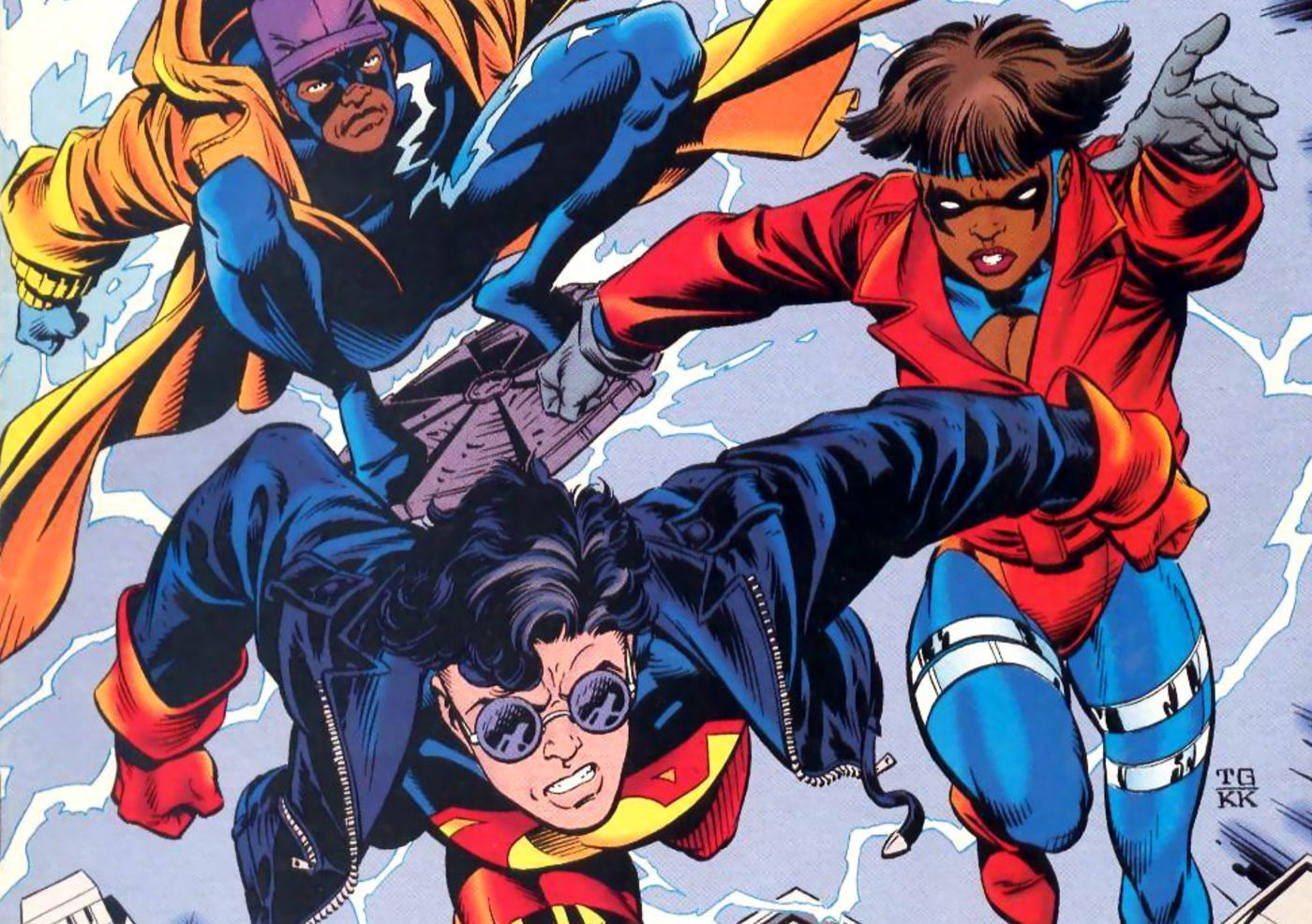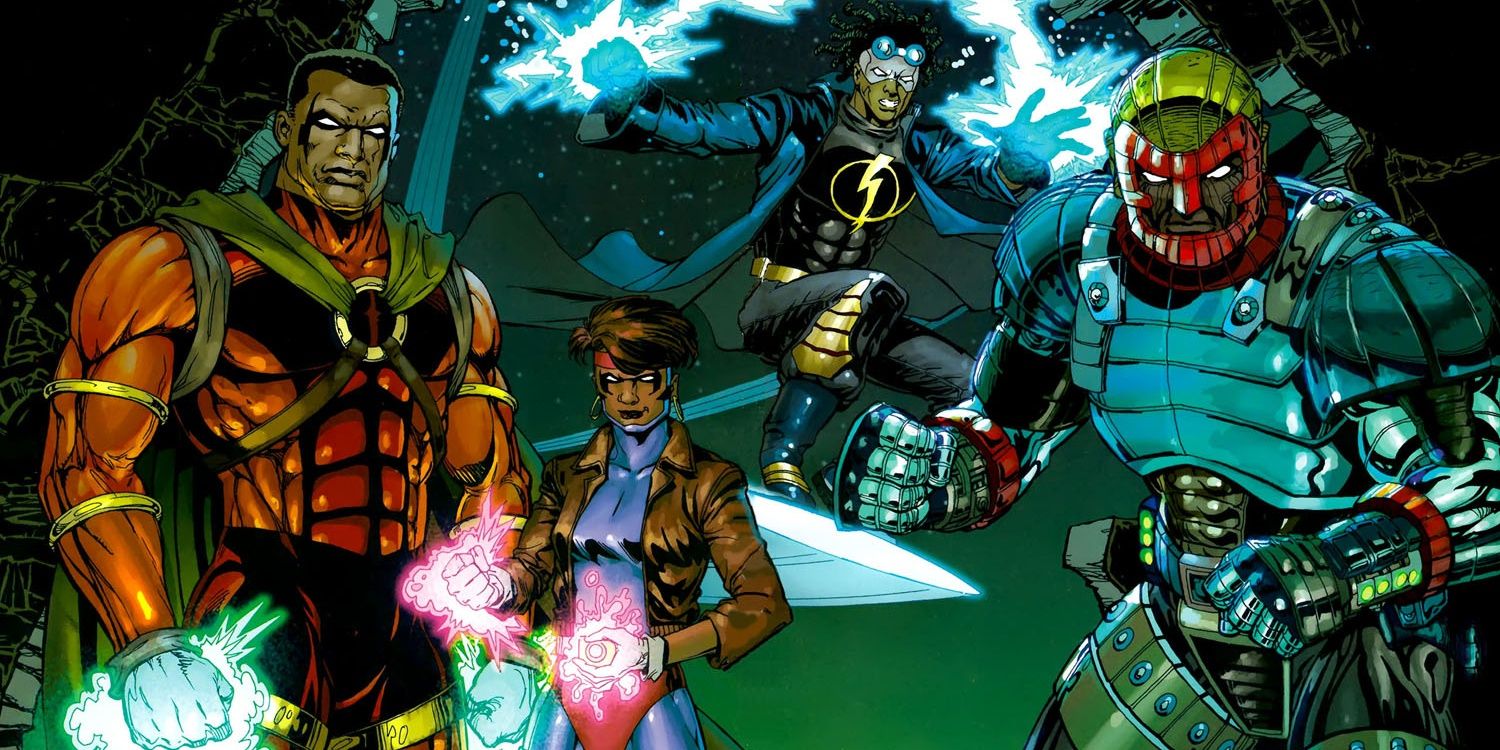Of all of the new superhero universes to spring out of the '90s, perhaps none was more important than the Dakotaverse of Milestone Comics. Taking the idea of narrative creative control that Image Comics pioneered, the line of superhero comic books embodied the creators' desire to showcase more diversity in the medium.
This was sadly a far more controversial move than necessary, with many retailers being unsure of how to market the books. This didn't keep Milestone from being a huge hit in its day, however, and the backing of comic book giant DC as distributor and publisher only helped to get the "Dakotaverse" off of the ground. Eventually, Milestone Media and DC would mutually jump on the intercompany crossover bandwagon of the '90s, pitting their characters against each in "Worlds Collide," an event masterminded by Dwayne McDuffie, Ivan Velez, Jr., Robert Washington, John Paul Leon, Chris Batista, Tom Grummett, Mark D. Bright, Denys Cowan and Chrisscross. With Superman and Steel going up against newer characters like Static and the Blood Syndicate, Milestone's foray into the DC Universe was the envy of other crossover events.
The superhero crossover event of 1994 pitted the heroes of the Superman family against the Milestone heroes, but there was a slight twist to this intercompany battle. In the Milestone Universe, or Dakotaverse, the DC Universe was a fictional world much like it is in our own, leaving the citizens of Dakota extremely dumbfounded upon seeing Superman, Superboy, and Steel living and breathing in their city. The cause of their union is an otherwise normal postal worker named Fred Bentson. Inadvertently developing reality-altering powers, he becomes the being known as Rift and causes his namesake to connect the Dakotaverse and DC Universes.
Rift's powers pulled heroes to and from each universe haphazardly, and he began to have a mental breakdown concerning which universe was his home and which was "fictional." Before they decided to work together, the starring heroes were all pitted against each other. Icon, the Dakotaverse's version of Superman, went toe to toe with the mainstream version of the Man of Steel. Likewise, Superboy teamed up with Static while hitting on Rocket, as Hardware begrudgingly worked with the far more heroic and selfless Steel. Ironically, it was the Blood Syndicate who first alerted Superman as to what was going on, as they simply thought that he was a Bang Baby (the Dakotaverse equivalent to a metahuman) who was just dressing up like the fictional Superman.
Rift eventually comes to believe that both universes are fictional, fusing them together into a sort of amalgam Silver Age continuity. Eventually, Superman and Icon are able to trap Rift in a pocket dimension, separating the two worlds and restoring reality. Both sets of heroes think that they encountered fictional characters, but go away with a sense of camaraderie nonetheless. Unlike most of the intercompany crossovers of the era, this was in-continuity for both universes, with the crossover taking place within the pages of both lines' monthly titles. In many ways, this made it succeed where so many other intercompany crossovers of its kind failed, with the whole affair having much more legitimacy behind it. It also helped that each creative team respected and wrote each other's characters well.
Milestone Forever
The Milestone heroes would continue to refer to the event after it had happened, definitively making the crossover a part of its canon. In the DC Universe, however, the events were quickly undone by Zero Hour. This semi-sequel to Crisis on Infinite Earths saw the history of the DC Universe redacted again, rendering events such as World Collide no longer in continuity with the mainstream DC timeline. Following the conclusive Milestone Forever miniseries that bid farewell to the original continuity, the Dakotaverse would fully merge with the DC Universe proper after the events of Final Crisis. It was explained that Dharma, a mystical being from the Dakotaverse, used residual energy from Rift to mend the space-time continuum after it had been nearly destroyed by the death of Darkseid. This merged the DC Universe and Dakotaverse into one, with only Dharma, Icon, and Superman knowing that the worlds were ever separate.
Static and other elements of the Dakotaverse would show up in the DC Universe before it was rebooted again after Flashpoint. He and Hardware would briefly show up during the ensuing "New 52" linewide relaunch, but legal reasons saw them eventually extracted from both the DC Universe and shows such as Young Justice. For years, fans requested that Milestone truly return, which was seemingly answered with talks in 2015 of relaunching as DC's "Earth-M." Sadly, legalities continued to keep things from moving forward, with planned releases in 2017 and 2018 halted. Finally, the Milestone Universe has come back, with September's Milestone Returns #0 rebooting the imprint's continuity as its own separate Earth again. Given how quick the Milestone and DC characters were to fight each other in the past, however, it's likely that sometime in the future, readers will see their worlds collide once more.



